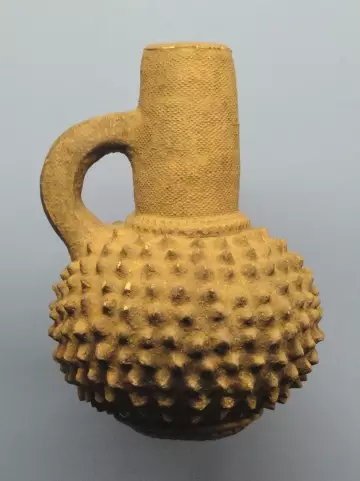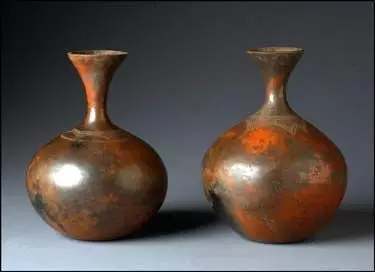Pots are like data; they provide information about the cultural interactions of African societies, as well as about the way of life, the paths taken, the requirements they had, and the abilities they possessed.
Pottery fragments discovered by archaeologists at old sites indicate that pots were being created as early as 7000 BC.

African pottery is both art and craft, and it conveys both theoretical concepts and real-world utility. They have endured for centuries and through them, we can begin to imagine the artists who shaped their form with their bare hands and crafted their features with basic tools. They are both durable and delicate at the same time.
In rural areas, pots were used for carrying water, storing large quantities of food and milk, cooking, serving, and drinking beer.

As long as clay was readily available locally, the containers could be quickly and affordably constructed for a completely practical usage.
Nonetheless, their concepts regarding the construction of specific sacred vessels were not primitive, and these ceramics were, and still are, a vital part of African ritual arts.
Process of Pottery
Clay must first be extracted from the ground and prepared before being mixed with water to make it malleable.
To reduce the shrinkage that takes place during the drying and fire processes, temper or matter such as pulverized sand, pebbles or ancient pottery, chopped dried grass and dung, or crushed chaff from winnowing grains and rice, is kneaded into the clay.
The amounts of these temperings added vary, although they almost never exceed 50%.

Typically, pots are coiled around a flattened base before being shaped and smoothed out. An genuine mold made of pottery, wood, or a calabash may occasionally be utilized.
After they have taken on the desired shape, they are allowed to dry in the sun before being burnt in a wood fire for the first time for at least four hours at a low temperature.

In more developed communities, pits or kilns will be available for this purpose. This can also be done over an open fire.
Getting wood for this project might be extremely difficult in areas experiencing a drought, but dried cow dung can be added as a substitute.
A substantial layer of fuel is encircled by low, circular brick walls with air holes at their bases, on which the pots are set.
Between the pots, more fuel is scattered. The old, shattered pottery is then stacked on top of the lighted kiln to preserve heat.
Once the pot has dried completely, the vessels can be decorated. The potter has the option of incising designs like zigzags or cross hatchings using a sharp blade or combs, or adding new shapes (such human or animal figurines and geometric or abstract forms) to the surface.
To decorate the pots, handles or lids can be molded and affixed, or textural designs can be imprinted using roulette. The majority of this ornamentation is applied prior to firing and will typically last longer and withstand heavy use.











